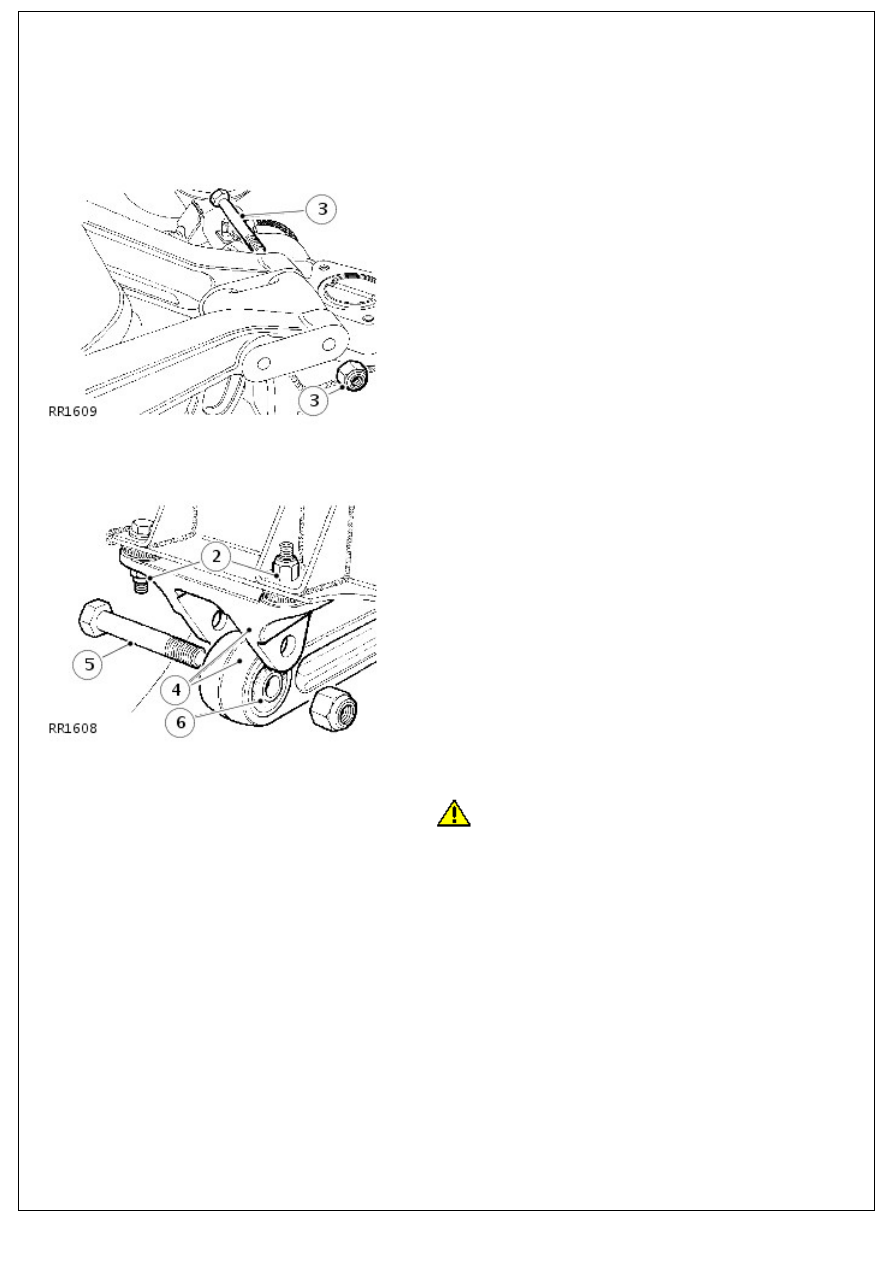Defender. Manual - part 22

Rear Suspension - Upper Arm
Removal and Installation
Removal
1. Support rear of chassis on stands, allow axle to hang freely.
2. Remove fixings securing upper arm bracket to frame.
3. Remove fixings securing upper arms to pivot bracket.
4. Remove upper arm, complete with frame bracket.
5. Remove bolt.
6. Separate upper arm from bracket.
7. Renew bush
8. Press out rubber bushes.
9.
CAUTION: Apply pressure to outer edge of bush, and
not rubber inner.
Fit bush centrally in housing.
Installation
1. NOTE: Do not fully tighten fixings until all components are in
position.
Secure upper arm to frame bracket.
2. Fit upper arm to pivot bracket and tighten fixings to 115 Nm
(84 lbf/ft).
3. Fit frame bracket to chassis mounting.
4. If you are fitting a new nut to the upper arm bolt, fully
tighten to 115 Nm (84 lbf/ft). If you are refitting an existing
nut, then tighten to 176 Nm (130 lbf/ft).